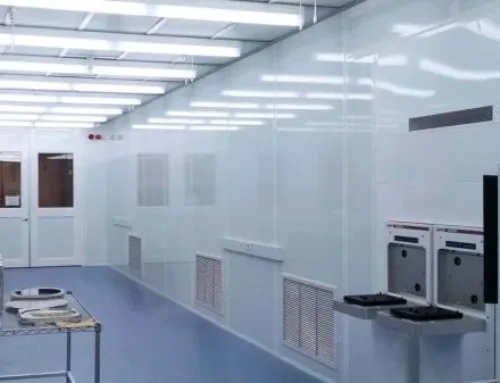Supermarket lighting is no longer just about illumination — it’s a key driver for customer experience, sales growth, and operational efficiency. As retail trends shift in 2025, supermarkets are upgrading their lighting systems to not only reduce costs but also to enhance the way products are displayed and how customers move through the store.
This supermarket lighting FAQ covers the most important questions asked by retailers, store designers, and facility managers. From fixture selection to energy efficiency, color rendering, and the latest 2025 trends, this guide will help you create a lighting strategy that transforms your supermarket into a brighter, more profitable space.
1. What is supermarket lighting and why is it important?
Supermarket lighting refers to the specialized illumination system designed to highlight products, guide customer flow, and create an enjoyable shopping environment. Proper lighting boosts product appeal, improves safety, supports staff efficiency, and can increase sales.
2. What types of lighting fixtures are best for supermarkets?
LED fixtures dominate the industry due to their energy efficiency, longevity, and versatility. Popular supermarket lighting types include:
-
Linear LED lights for uniform general illumination in aisles.
-
Spotlights to highlight promotional areas or premium products.
-
Downlights for focused zones such as checkout counters.
-
Refrigerated case lighting specifically designed for cold and humid environments.
3. How do I choose the right lighting for different supermarket sections?
Each section benefits from a tailored lighting approach:
-
Fresh produce, bakery, meat → Use brighter, high-CRI lights to enhance color and freshness.
-
General aisles → Uniform, glare-free linear lighting for a comfortable shopping experience.
-
Refrigerated displays → Specialized LED fixtures that emit minimal heat and preserve product quality.
4. What is the ideal color temperature and CRI for supermarket lighting?
-
Color temperature: 3000K–4000K for a balance between warmth and clarity.
-
CRI (Color Rendering Index): Above 80 is recommended to ensure true-to-life colors, particularly in fresh food displays.
5. How can supermarket lighting affect customer behavior and sales?
Well-designed supermarket lighting influences shopping behavior by:
-
Directing attention to promotions and displays.
-
Increasing product visibility and attractiveness.
-
Enhancing the overall ambiance, encouraging longer shopping times and higher spending.
6. What are the energy-efficient lighting options for supermarkets?
LED lighting offers the best savings, using up to 60% less energy compared to fluorescent or halogen lights. Energy efficiency improves further with smart controls such as dimming, daylight harvesting, and occupancy sensors.
7. How can LED lighting improve supermarket operations?
-
Reduced maintenance with long lifespans.
-
Instant-on functionality.
-
Dimming options for adjusting brightness during different times of day or events.
8. What lighting levels (lux) are recommended for grocery, produce, bakery, and meat sections?
-
Grocery aisles: 300–500 lux
-
Produce: 1000–1200 lux
-
Bakery: 750–1000 lux
-
Meat: 1200 lux for optimal color accuracy
9. How do accent lighting and task lighting enhance product visibility?
-
Accent lighting: Spotlights and track lights highlight new arrivals, seasonal promotions, or premium products.
-
Task lighting: Provides focused illumination for checkouts, self-service stations, and preparation areas.
10. What role does smart lighting and automation play in supermarkets?
Smart systems provide:
-
Automated scheduling based on store hours.
-
Daylight-responsive dimming.
-
Remote control for color temperature adjustments.
-
Integration with IoT for energy management and customer analytics.
11. What are the latest supermarket lighting trends in 2025?
Key supermarket lighting trends include:
-
Tunable white lighting for dynamic store atmospheres.
-
IoT-enabled sensors for energy monitoring.
-
Minimalist fixture designs for modern interiors.
-
UV-C disinfection lighting for hygiene and food safety.
12. How can supermarkets reduce operating costs with lighting?
-
Switching to high-efficiency LEDs.
-
Installing motion sensors and daylight controls.
-
Conducting preventive maintenance.
-
Investing in durable, high-quality fixtures to minimize replacements.
13. What are the safety and compliance standards for supermarket lighting?
Lighting systems must meet regional certifications like UL, CE, and RoHS. For refrigerated or food areas, fixtures should be waterproof, shatterproof, and compliant with food safety standards.
14. How can lighting improve the shopping experience and employee workspace?
Balanced, glare-free lighting creates comfortable aisles for shoppers and well-lit workstations for employees. Adjustable systems allow supermarkets to create different lighting “scenes” for peak hours or quieter periods.
15. What maintenance practices ensure longevity and performance of supermarket lighting?
-
Regular fixture cleaning and dust removal.
-
Scheduled inspections to spot failures early.
-
Replacement of damaged lenses and diffusers.
-
Using branded, high-quality LED lighting systems.
16. How can UV lighting be used for hygiene and sanitation in supermarkets?
UV-C lighting is increasingly adopted in HVAC systems, storage rooms, and surface sanitation to control bacteria and viruses, ensuring a safer food retail environment.
17. What kind of lighting is best for refrigerated and fresh food displays?
LED refrigerated display lighting with low heat emission, high CRI, and 3500K color temperature maintains freshness and enhances the visual appeal of perishable items.
18. How does lighting layout influence customer navigation within supermarkets?
Strategic zoning with light helps:
-
Guide customers through aisles.
-
Highlight promotions and store entrances.
-
Create sightlines that improve flow and exposure to different departments.
19. What are common mistakes to avoid when designing supermarket lighting?
-
Uneven illumination or excessive glare.
-
Using low-quality bulbs with poor CRI.
-
Neglecting fixture placement in refrigerated sections.
-
Skipping automation controls that could reduce costs.
20. How can supermarkets balance aesthetics and functionality in lighting design?
A layered lighting strategy works best:
-
Ambient lighting for general illumination.
-
Accent lighting to emphasize products.
-
Decorative lighting for branding and aesthetics.
Final Thoughts: Building the Future of Supermarket Lighting
This supermarket lighting FAQ shows how effective lighting design can improve product visibility, shopper experience, and operational savings. In 2025, trends like tunable white LEDs, smart controls, and UV-C sanitation make lighting a strategic investment for every supermarket.
For tailored product recommendations or a professional supermarket lighting layout plan, consult specialists like prillumen.com for high-quality solutions.






Leave A Comment